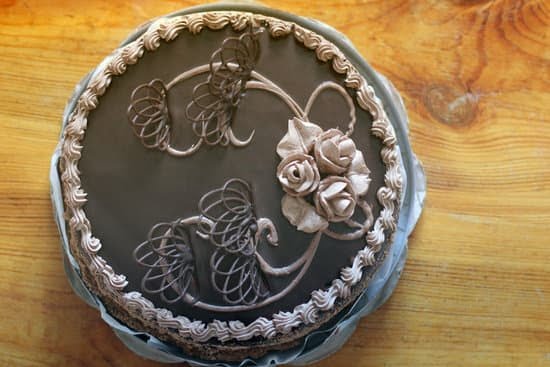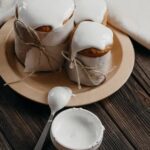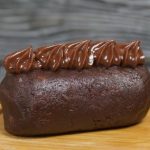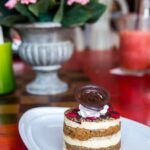Are you looking to add a touch of elegance and beauty to your cakes? Learn how to make decorative flowers for cakes with this comprehensive guide. Whether you’re a professional baker or a passionate home baker, decorative flowers can elevate the look of any cake, making it a stunning centerpiece for any occasion.
Decorative flowers have always been a popular choice for adorning cakes, adding color, texture, and an element of artistry. They are not only visually appealing but also versatile, allowing you to create different themes, from romantic floral designs to whimsical arrangements. In this article, we will explore the various types of decorative flowers for cakes and provide you with the tools, techniques, and creative ideas to help you master the art of cake decorating.
From edible blooms such as fondant or gum paste flowers to non-edible decorative flowers like silk or sugarcraft flowers, the possibilities are endless. We will also delve into essential tools and materials needed for creating these delicate and intricate decorations.
Follow along as we take you through a step-by-step tutorial on crafting various types of decorative flowers and learn about coloring and dusting techniques to achieve a realistic look. Let’s embark on this delightful journey of creating exquisite decorative flowers for your cakes.
Types of Decorative Flowers
Decorative flowers are a beautiful and elegant way to enhance the look of a cake. There are various types of edible flowers as well as non-edible decorative flowers that can be used to add a pop of color and sophistication to any cake.
Edible flowers such as roses, violets, lavender, and pansies can be used to decorate cakes and are completely safe for consumption. These delicate blooms not only look stunning but also add a subtle floral flavor to the cake. On the other hand, non-edible decorative flowers are typically made from materials such as fondant, gum paste, or royal icing. These flowers can be molded and shaped into intricate designs, offering endless possibilities for customization.
When creating decorative flowers for cakes, it is important to use the right tools and materials to achieve the best results. Some essential tools include flower cutters, veining mats, foam pads, shaping tools, and petal dusts. These tools will help in shaping and adding intricate details to the flowers.
In addition to edible and non-edible decorative flowers, there are also silk or sugar flowers that can be used for cake decoration. While silk flowers cannot be eaten, sugar flowers are entirely edible and offer a lifelike appearance. Sugar paste (also known as gum paste) is commonly used in creating these types of decorations, allowing for intricate detailing and realistic textures.
| Edible Flowers | Non-Edible Decorative Flowers |
|---|---|
| Roses | Silk Flowers |
| Violets | Sugar Flowers |
| Lavender | Fondant Flowers |
| Pansies | Royal Icing Flowers |
Tools and Materials
When it comes to creating decorative flowers for cakes, having the right tools and materials is essential. Here’s a list of the necessary items that you’ll need to create beautiful and edible flowers for your cake decorating projects.
First and foremost, you will need flower cutters in various shapes and sizes. These cutters will help you achieve the desired shape for each type of flower that you want to create. You can find a variety of flower cutters in baking supply stores or online.
In addition to flower cutters, you will also need a rolling pin to roll out your gum paste or fondant. This will make it easier for you to create thin, uniform petals for your flowers. A good quality rolling pin is a must-have tool for any cake decorator.
Another essential item on the list is floral wire and tape. These will be used to create stems for your flowers, allowing you to arrange them on your cake in a realistic and artistic way. Floral wire and tape are readily available in most craft stores.
Finally, you will need edible glue or royal icing to hold your flowers together and attach them to your cake. These adhesives are food-safe and specially designed for use in cake decorating projects. With these tools and materials at your disposal, you’ll be well-equipped to create stunning decorative flowers for cakes.
So whether you’re making a simple buttercream-frosted cake or an elaborate fondant-covered masterpiece, having the right tools and materials is crucial in achieving professional-looking results. By following this guide, individuals can learn how to make decorative flowers for cakes that are truly show-stopping.
Step-by-Step Guide
Decorative flowers are a beautiful and elegant way to elevate the look of any cake. Whether you are a professional baker or an enthusiastic home baker, mastering the art of creating decorative flowers for cakes can take your creations to the next level. In this step-by-step guide, we will walk you through the process of creating various types of decorative flowers that will impress anyone who sees and tastes your cakes.
Choosing the Right Materials:
The first step in creating decorative flowers for cakes is to gather the necessary tools and materials. You will need gum paste or fondant, flower cutters in different shapes and sizes, foam pads, a rolling pin, ball tools, thinning pads, and a variety of petal dusts for coloring. These materials can be easily found at baking supply stores or online.
Creating Different Types of Flowers:
Now that you have all the materials ready, it’s time to start making the decorative flowers for your cakes. The most common types of edible flowers used for cake decoration include roses, peonies, daisies, and cherry blossoms. Each type of flower requires a specific technique for shaping and assembling its petals. For example, rose petals are typically made by cutting out individual petals and thinning out their edges before assembling them into a beautiful bloom.
Finishing Touches:
After shaping and assembling the petals into your desired flower shape, you can add depth and realism to your creations by using petal dusts to color and dust the flowers. This technique involves gently brushing edible color powders onto the surface of the petals to create shading effects and add dimension. By using different colors strategically, you can achieve a lifelike appearance for your decorative flowers.
| Tools/Materials | For Creating Decorative Flowers |
|---|---|
| Gum Paste or Fondant | Essential for shaping petals |
| Flower Cutters | For cutting out different shapes and sizes |
| Foam Pads | To work on while thinning out edges |
| Rolling Pin | For flattening gum paste or fondant |
Coloring and Dusting Techniques
Creating decorative flowers for cakes is a beautiful and creative way to enhance the appearance of any cake. Once you have mastered the art of making edible or non-edible flowers, it’s important to focus on coloring and dusting techniques to bring them to life. Here are some techniques for coloring and dusting flowers for a realistic look:
- Gel Food Coloring: Use gel food coloring mixed with a small amount of clear alcohol (like vodka) to create vibrant and concentrated color for your flowers.
- Painting Technique: Invest in fine-tip paintbrushes to delicately paint your edible flowers with edible food colors, allowing you to add intricate details and shading for a more realistic appearance.
- Dusting Powders: Utilize luster dust, petal dust, and pearl dust to add shimmer, depth, and dimension to your decorative flowers. These dusts can be brushed onto the petals or centers of the flower using soft bristle brushes.
These coloring and dusting techniques are essential in achieving a lifelike quality in your decorative flowers, adding depth and dimension that truly make them stand out on any cake.
Additionally, consider experimenting with different combinations of colors and layering techniques to create unique effects within each petal or flower center. By mastering these techniques, you’ll be able to create stunning decorative flowers that will elevate the overall look of your cakes.
Remember that practice is key when it comes to perfecting these coloring and dusting techniques. So don’t be afraid to experiment and try out different methods until you find what works best for you. With time and patience, you’ll be able to create breathtaking decorative flowers for cakes that will leave everyone impressed.
Storing and Preserving
Choosing the Right Storage Method
After spending time and effort creating beautiful decorative flowers for cakes, it’s important to store them properly to maintain their quality. For non-edible decorative flowers made of materials such as gum paste or fondant, a simple airtight container will do the trick. However, for edible flowers made from ingredients like wafer paper or sugar paste, extra care must be taken to ensure they stay fresh.
Preservation Techniques
To preserve edible decorative flowers for future use, consider using methods such as air drying or freezing. Air drying involves placing the flowers in a cool, dry place for several days until they harden completely, while freezing entails carefully wrapping the flowers in plastic wrap and storing them in an airtight container in the freezer. Both of these methods can help extend the lifespan of your decorative flowers without compromising their appearance or flavor.
Avoiding Moisture and Sunlight
When storing decorative flowers for cakes, it’s essential to keep them away from moisture and direct sunlight. Excessive moisture can cause edible flowers to become limp or sticky, while sunlight can fade their colors over time.
To prevent these issues, always store your decorative flowers in a cool, dark place, away from any sources of heat or humidity. Following these tips will help ensure that your beautiful creations remain pristine until it’s time to adorn another cake with them.
By following these tips on how to store and preserve decorative flowers for cakes, you can make sure that your hard work pays off every time you create stunning floral decorations for your baked goods.
Creative Ideas
Decorative flowers are not only a beautiful addition to cakes, but they can also be used in unique and creative ways to enhance the overall design of the dessert. Whether you are decorating a birthday cake, wedding cake, or any other special occasion cake, there are countless creative ideas for incorporating decorative flowers.
Adorning the Entire Cake
One creative idea for using decorative flowers on cakes is to adorn the entire surface with an array of different flowers. You can create a stunning floral cascade effect by placing edible or non-edible flowers around the perimeter of the cake or cascading down one side. This creates a visually striking and elegant presentation that is sure to impress your guests.
Creating Flower Bouquets
Another unique way to use decorative flowers on cakes is by creating small bouquets or arrangements with an assortment of flowers. These mini bouquets can be strategically placed on top of the cake at varying heights to add dimension and visual interest. Additionally, you can incorporate greenery and foliage to complement the flowers and create a more natural and organic look.
Adding Floral Accents
Incorporating decorative flowers as accents throughout the cake design is another creative idea. For example, you can place individual flowers on each tier of a multi-tiered cake or scatter them along the edges of each layer for a subtle yet impactful touch. This adds a whimsical and delicate touch to the overall presentation of the cake.
By incorporating these creative ideas for using decorative flowers on cakes, you can elevate your cake decorating skills and create visually stunning desserts that are sure to leave a lasting impression. Whether you choose to adorn the entire surface with an abundance of blooms or strategically place flower bouquets as focal points, there are endless possibilities for creating unique and breathtaking designs using decorative flowers.
Troubleshooting
In conclusion, creating decorative flowers for cakes can greatly enhance the overall visual appeal of your baked creations. Whether you prefer using edible flowers or non-edible decorative options, there are various types and techniques to choose from. By following a step-by-step guide and utilizing the right tools and materials, anyone can learn how to make decorative flowers for cakes.
One of the key aspects to consider when making decorative flowers for cakes is mastering the coloring and dusting techniques. This is crucial in achieving a realistic look that will impress your friends, family, or clients. Additionally, it is important to properly store and preserve the flowers so that they can be used for future cake decorating projects.
If you encounter any issues during the process of making decorative flowers for cakes, our troubleshooting section provides solutions to common problems that may arise. By addressing these issues head-on and following our tips, you can ensure that your decorative flowers turn out perfectly every time. With some creativity and practice, you’ll soon be able to incorporate these beautiful floral decorations into your cake designs in unique and stunning ways.
Frequently Asked Questions
How Do You Prepare Fake Flowers for a Cake?
To prepare fake flowers for a cake, start by cleaning them to remove any dust or dirt. Then, carefully trim the stems to the desired length and wrap them with floral tape. Finally, place the fake flowers on the cake in a visually pleasing arrangement.
How to Make Icing Flowers for Beginners?
Making icing flowers for beginners can be achieved by starting with basic shapes like stars and rosettes. Practice piping these shapes onto parchment paper until you feel confident in your technique. Then, you can move on to more complex flower designs.
What Kind of Flowers Can I Use to Decorate a Cake?
When decorating a cake with real flowers, it’s important to ensure that the flowers are edible and safe for consumption. Types of edible flowers that can be used to decorate cakes include roses, violets, pansies, and chamomile. It’s crucial to research which flowers are safe before using them on a cake.

Welcome to our cake decorating blog! My name is Destiny Flores, and I am the proud owner of a cake decorating business named Cake Karma. Our mission is to provide delicious, beautiful cakes for all occasions. We specialize in creating custom cakes that are tailored specifically to each customer’s individual needs and tastes.





